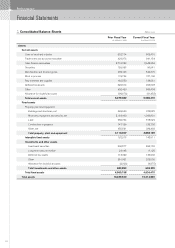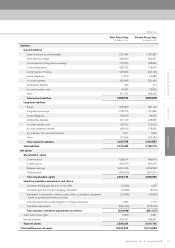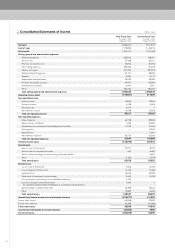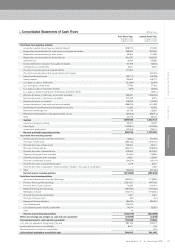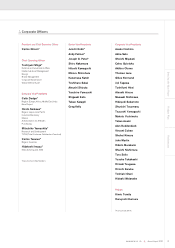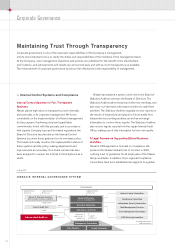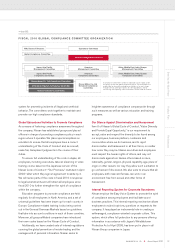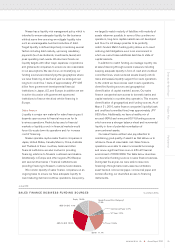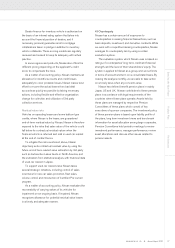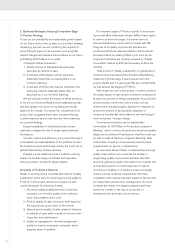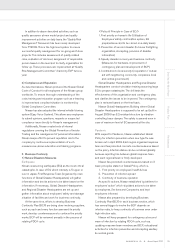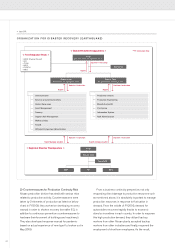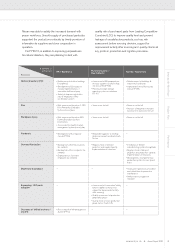Nissan 2010 Annual Report Download - page 37
Download and view the complete annual report
Please find page 37 of the 2010 Nissan annual report below. You can navigate through the pages in the report by either clicking on the pages listed below, or by using the keyword search tool below to find specific information within the annual report.
Entering the Next Phase Product Plan Performance
35Annual Report 2010NISSAN MOTOR CO., LTD.
Nissan has a liquidity risk management policy which is
intended to ensure adequate liquidity for the business
while at same time ensuring we mitigate liquidity risks
such as unmanageable bunched maturities of debt.
Target liquidity is defined objectively considering several
factors including debt maturity, upcoming mandatory
payments (such as dividends, investments, taxes) and
peak operating cash needs. We also benchmark our
liquidity targets with other major Japanese corporations
and global auto companies to ensure we are reasonable
in our assumptions. We also focus on diversifying our
funding sources and diversifying the geographies where
we raise financing. In last fiscal year we arranged new
long-term credit line / loans of approximately JPY 208
billion from government developmental financial
institutions in Japan, U.S. and Europe. In addition we are
in active discussion with government sponsored
institutions to finance electrical vehicle financing in
Europe.
Sales finance
Liquidity is a major raw material for sales financing as it
depends upon access to financial resources for its
business operations. Restricted access to financial
markets or liquidity crunch in financial markets would
force it to scale down its operations and /or increase
cost of financing.
Nissan operates captive sales finance companies in
Japan, United States, Canada, Mexico, China, Australia
and Thailand. In these countries, banks and other
financial institutions are also involved in providing
financing solutions to Nissan’s customers and dealers.
Additionally, in Europe and other regions, RCI Banque
and several other banks / financial institutions are
providing financing to Nissan’s customers and dealers.
We monitor liquidity of sales finance companies on an
ongoing basis to ensure we have adequate liquidity to
meet maturing debt and continue operations. As a policy,
we target to match maturity of liabilities with maturity of
assets wherever possible. In some of the countries we
operate in, long-term capital markets are not developed
and thus it is not always possible to be perfectly
match-funded. Match funding policy allows us to meet
maturing debt obligations even in an environment in
which we cannot raise additional debt due to state of
capital markets.
In addition to match funding, we manage liquidity risk
at sales financing through several measures including
keeping adequate liquidity in form of cash and unutilized
committed lines, unencumbered assets (mainly vehicle
loans and leases), liquidity support from auto operations
to the extent we have excess cash in auto operations,
diversified funding sources and geographical
diversification of capital markets’ access. Our sales
finance companies have access to domestic banks and
capital markets in countries they operate in. This ensures
diversification of geographical and funding sources. As of
March 31, 2010, sales finance companies’ liquidity (cash
and unutilized committed lines) was approximately JPY
633 billion. Additionally, we have a healthy mix of
secured (49%) and unsecured (51%) funding sources
which ensures a stronger balance sheet and incremental
liquidity in form of potential monetization of
unencumbered assets.
Our sales finance entities’ also pay attention to
maintaining good quality of assets’ as that allows us to
refinance those at reasonable cost. Sales finance
operations were able to make incremental borrowings
and renew significant lines even in difficult financial
environment of 2008-2009. The table below describes
our diversified funding sources in sales finance business.
During last fiscal year, we were able to raise new
financings through bank loans, asset securitization,
asset-backed commercial paper, commercial paper and
bonds reflecting our diversified access to financing
instruments.
SALES FINANCE BUSINESS FUNDING SOURCES
Chart
03
:
(As of March, 2010)
Group Finance (Inter-Company)
17.9%
Commercial Paper 3.7%
ABS On B/S 28.0% L/T Loan 20.6%
Bonds 11.1%
S/T Loan 0.9%
Equity 10.8%
ABS Off B/S 7.0%



